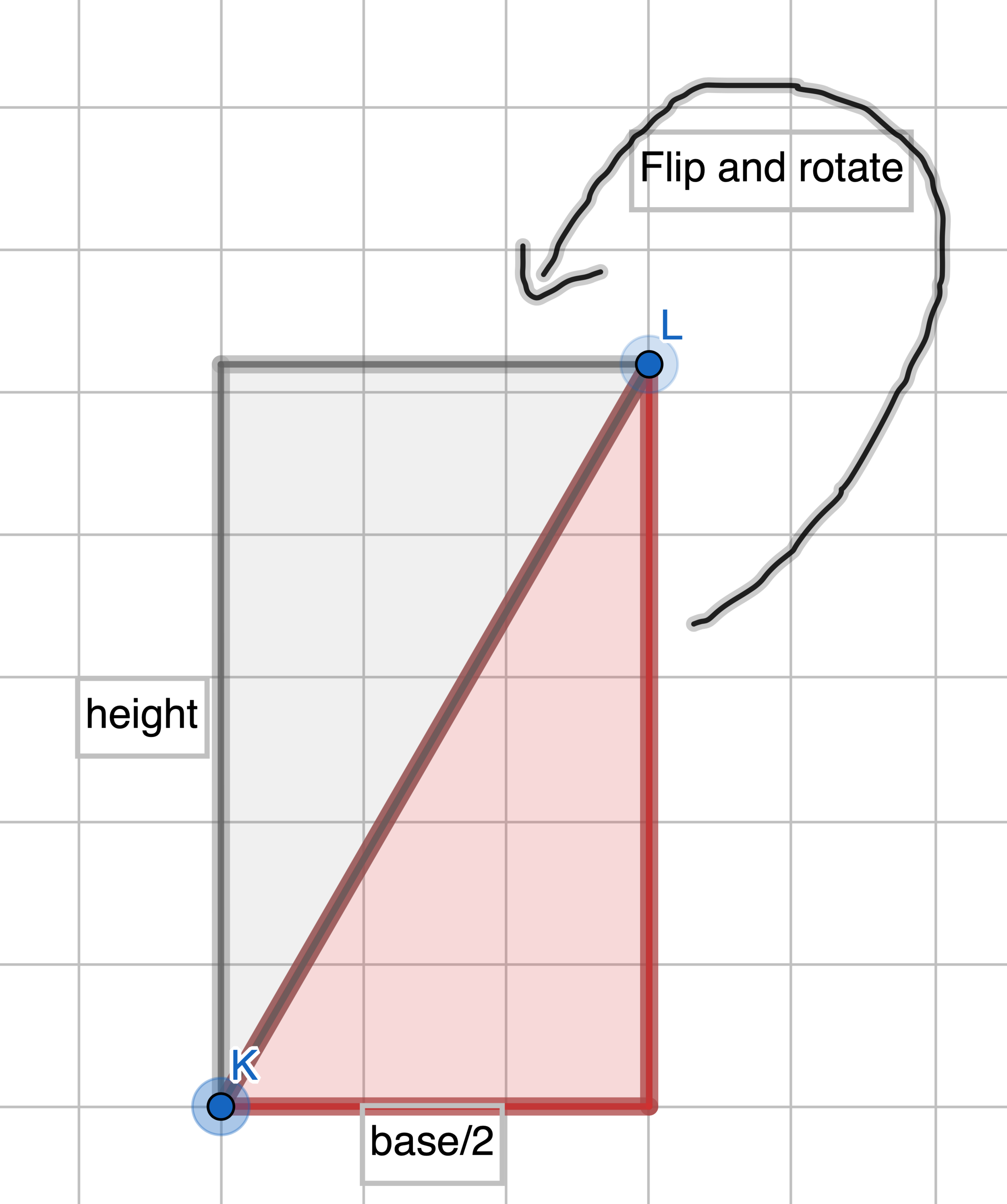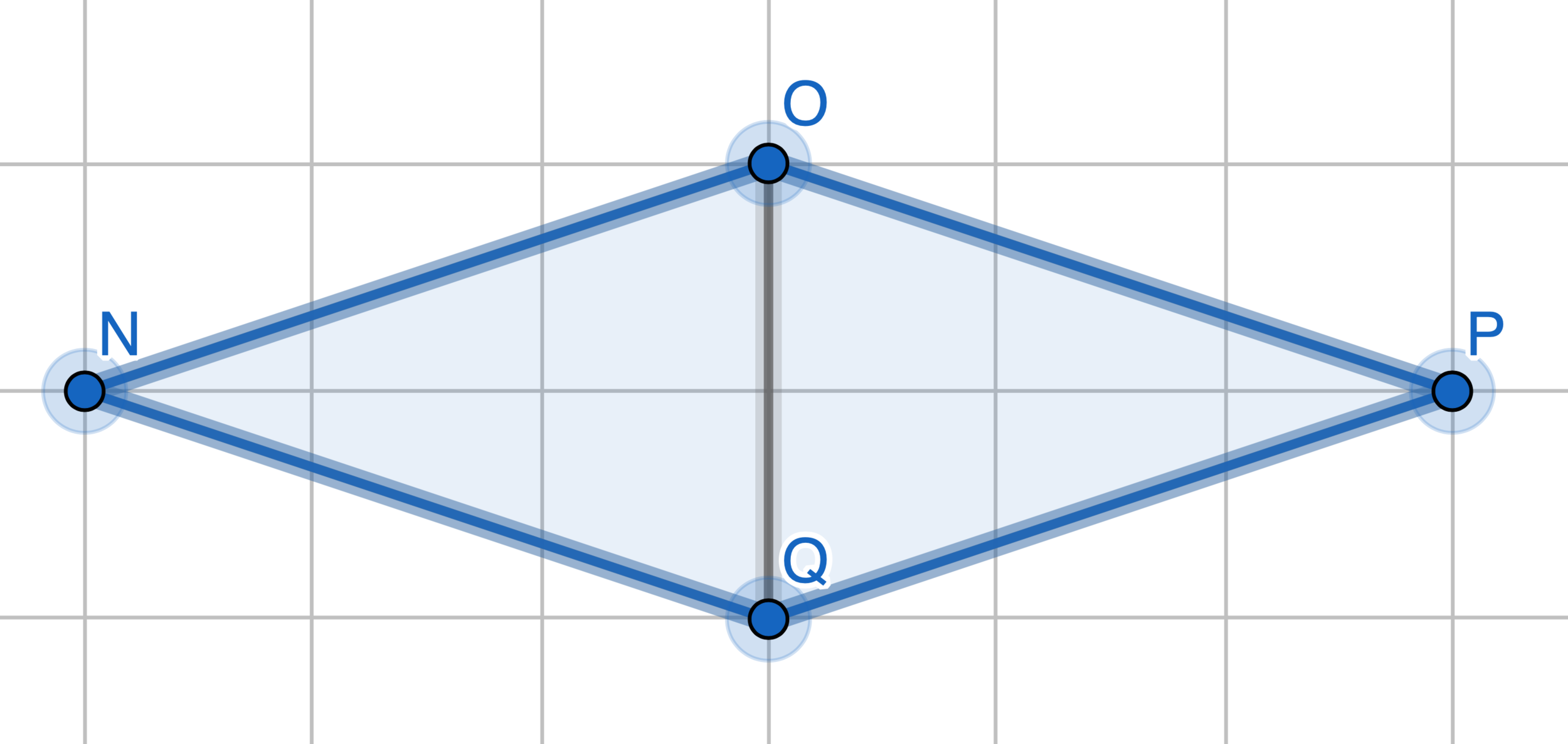A parent asks:
I have been using youtube to get some basic lessons across to my child. She recently has been asking me to teach her area lessons, I have used the yellow materials and have taught her how to calculate area of a polygon, square, rectangle and a triangle. I could use some guiding on how to teach equilateral triangle and rhombus areas in a Montessori way. I think she has gotten the triangle part, but I don't know if I got it enough to know if she is getting to the solution the right way or not :D
There are two aspects of this question that I'd like to address: how to find areas of equilateral triangles and the notion of "getting to the solution the right way". Let's take these in reverse order.
Getting to the solution the "right way".
Let's get this one out of the way immediately: any solution that reliably gets you a correct result is the right way.
Yes, there are standard algorithms or formulas, and yes, we have particular ways of approaching topics in Montessori, but the ultimate goal is to understand what you are doing well enough to find an accurate answer. In fact, trying to emphasize the "right" way to do something in math tends to create more confusion than clarity. It is important to eventually learn the standard algorithms and recognize standard formulas, since they are efficient and people expect you to know them, but that should come after a child has developed a real understanding.
Otherwise, you emphasize memory over sense-making, and we humans are much better at making sense of things than we are at remembering disconnected facts. To be honest, I have to reconstruct the formula for a rhombus every time I need it (which, frankly, isnt' very often), and I probably reconstruct it a different way every time. The important thing is that I can reconstruct it because I understand what needs to be done. That is what I encourage you to aim for.
Area of an Equilateral Triangle
Okay, so now lets tackle the question of how to actually find the area of an equilateral triangle. It's exactly the same as finding any other triangle! Let’s start with an equilateral triangle:
An equilateral triangle!
Now cut your triangle vertically in half and flip half of it upside down and around so that you make a rectangle:
Be sure to turn half the triangle upside down as well as rotating.
Now we have a rectangle whose base is half the base of the original triangle and whose height is the same as the triangle’s. The area of this rectangle is the same as the area of the triangle: $\frac{1}{2}bh$.
The tricky bit is finding the height: the actual height will never come out as a nice, neat number, because the ratio of the sides to the height is $2:\sqrt{3}$ (unless you make the sides a really weird number). You need to understand the Pythagorean theorem and feel comfortable working with square roots to calculate this.
Fortunately, there is no need to calculate this height precisely when we are first learning. Instead, you can use one of the oldest tricks in the book: a ruler! There’s actually a nifty little Montessori material for measuring the height of the area material and constructive triangles, but you don’t need one (I’ve never had one in my classroom). The real trick is to make sure you measure the height perpendicular to the base. To do that, you can use the Constructive Triangles that already come in two parts, use a straightedge and compass (but that’s a story for another day!), or use a carpenter’s set square to measure the height. If you want to make your own Constructive Triangles, you can find some templates online. I love this idea of making them out of craft foam rather than paper.
Area of a Rhombus
Now that you know how to find the area of a triangle, you also know how to find the area of a rhombus: it’s just two triangles stuck together!
A rhombus is just two triangles stuck together
We can cut this up and flip it around to make a rectangle, too. I will leave working out the exact measurements, as mathematicians like to say, as an exercise for the reader, but is one way you could approach it:
One way to turn a rhombus into a rectangle
I encourage you to get some paper, or some craft foam, make some rhombi, and start cutting them up. Have fun!




